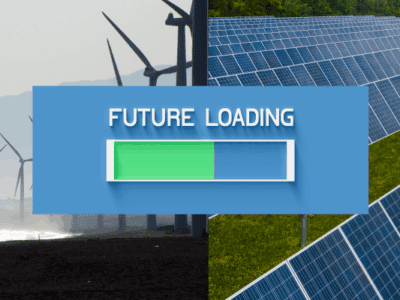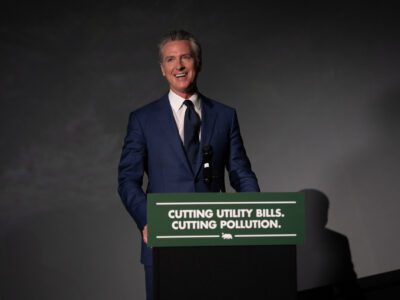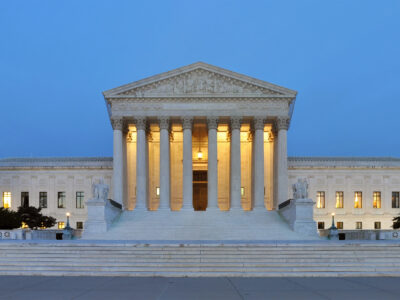Problem solved?
Bipartisan proposal for permitting reform from Problem Solvers Caucus is a good first step, but has much more work to do
The permitting reform conversation continues in Congress – this time with a long set of proposals from the bipartisan Problem Solvers Caucus, based on a range of conversations with different stakeholders and interest groups. There is much that is good in this set of proposals, but there are also proposals that require more thought, or miss the mark. And for many of them, whether they are beneficial (or not) will depend a lot on the details. In this blog post, I’ll tackle a number of those proposals, though a few are better dealt with separately because of their complexity.
Many of the proposals relate to judicial review and timeframes for agency decisionmaking. I’m sympathetic to the concerns that the proposals seek to address, but I’m skeptical that they will move the needle a whole lot.
For instance, the proposal recommends moving judicial review of large, multi-state agency NEPA decisions into the court of appeals, skipping initial review at the district court level. As my co-authors and I have found in prior work for litigation under the California Environmental Quality Act, and as other researchers have noted for NEPA, much of the delay in judicial review in environmental review happens because of the fact that most cases go through two levels of judicial review. Thus, cutting review to just one stage seems like it would speed things up significantly. It would also reduce confusion about venue for multi-state projects. And direct review in courts of appeal has been used in a range of other environmental law contexts. But much of the delay of two levels of judicial review happens at the court of appeals level, so unless there is a plan to speed up review at that stage, it’s not clear the proposal would make as much of a difference as much as one might expect. Moreover, channeling judicial review to the courts of appeal in some cases, but not others, has sometimes created a world of pain for courts in making jurisdictional determinations, which is not a recipe for speedy review. What would one do about lawsuits that have NEPA and non-NEPA claims, for instance? This is a proposal that is worth exploring, but requires much more work.
Likewise, the proposal calls for imposing exhaustion requirements on lawsuits under NEPA (limiting judicial review to parties that have provided substantive comments on the draft environmental document). I’m skeptical that this change will matter much, at least for sophisticated opponents – it simply will require litigants to file comments during the administrative process (most do in any case). But for the same reasons, I see minimal negative impacts from the proposal.
Another proposal is for shorter statutes of limitations for filing lawsuits against high-priority infrastructure projects. The main benefit here will probably not be to reduce litigation – again, sophisticated actors likely will be aware of deadlines and meet them – but to shorten the period of uncertainty that an agency faces in terms of whether it should proceed with a project. This is beneficial, but it is not clear it will make a huge impact overall.
A range of other proposals make a lot of sense in terms of reducing procedures that have little benefit, or tweaking statutes to ensure they operate as Congress likely originally intended them to. In the first bucket is a proposal to end mandatory hearings for nuclear power plant permitting if there are no objections. In the second bucket is clarifying that federal power to identify transmission corridors allows for the designation of individual lines (and thus allowing for federal preemption of state regulation for those specific lines).
Some proposals involve streamlining that should, on net, have substantial environmental benefits, such as expanding geothermal permitting and giving geothermal projects similar NEPA treatment to oil and gas projects. Geothermal projects have similar (or perhaps fewer) local environmental impacts than oil and gas projects, and given geothermal’s importance as a potential carbon-free baseload energy source, it should be treated at least as well as oil and gas is.
Other proposals do not tackle the substance of challenging problems. For instance, one proposal calls for Congress to “provide strong guidance on the allocation of the costs of [new transmission lines], while explicitly prohibiting the allocation of costs to customers who receive no or trivial benefits.” But the problem with cost allocation is that it is very difficult to determine who benefits from, and thus who should pay, for new interstate transmission lines. I do agree that it might speed things up for Congress to bite the bullet and simply dictate what the default compensation system should be (allowing the agency to deviate with explanation). But without a proposal as to what that actual compensation system would be (except for vague platitudes as to not burdening customers who receive no benefits, which again will be very hard to measure), it’s not clear the proposal moves the ball at all on the hard question of what that compensation formula should be.
Similarly, the proposal would seek to restrict judicial enforcement of NEPA by only allowing courts to restrict agency actions for NEPA violations if the violation would produce “proximate and substantial environmental harm.” That proposal implies that environmental harm that results from a legal violation is acceptable as long as it is diffuse enough, or far enough in the future. And in any case, the concept of what is “proximate” harm is notoriously slippery – this provision might just produce yet another fuzzy standard for litigants to fight over in a NEPA statutory scheme that is full of such standards.
There are other issues – such as changes to mining law on federal lands, or certification under Section 401 of the Clean Water Act – that require more space than a single blog post allows for discussion that I will try to get to in the future. And some proposals – such as exempting from NEPA projects that have gone through environmental review under a state law or an equivalent federal law – have issues that I have already flagged in the context with other legislative proposals.
Overall then, there is promise in this proposal. Any proposal that is bipartisan will necessarily have strengths and weaknesses for any participant. But the proposal also requires a lot more work before it can produce statutory language that will actually move the needle in terms of the goals of the proponents.







Reader Comments